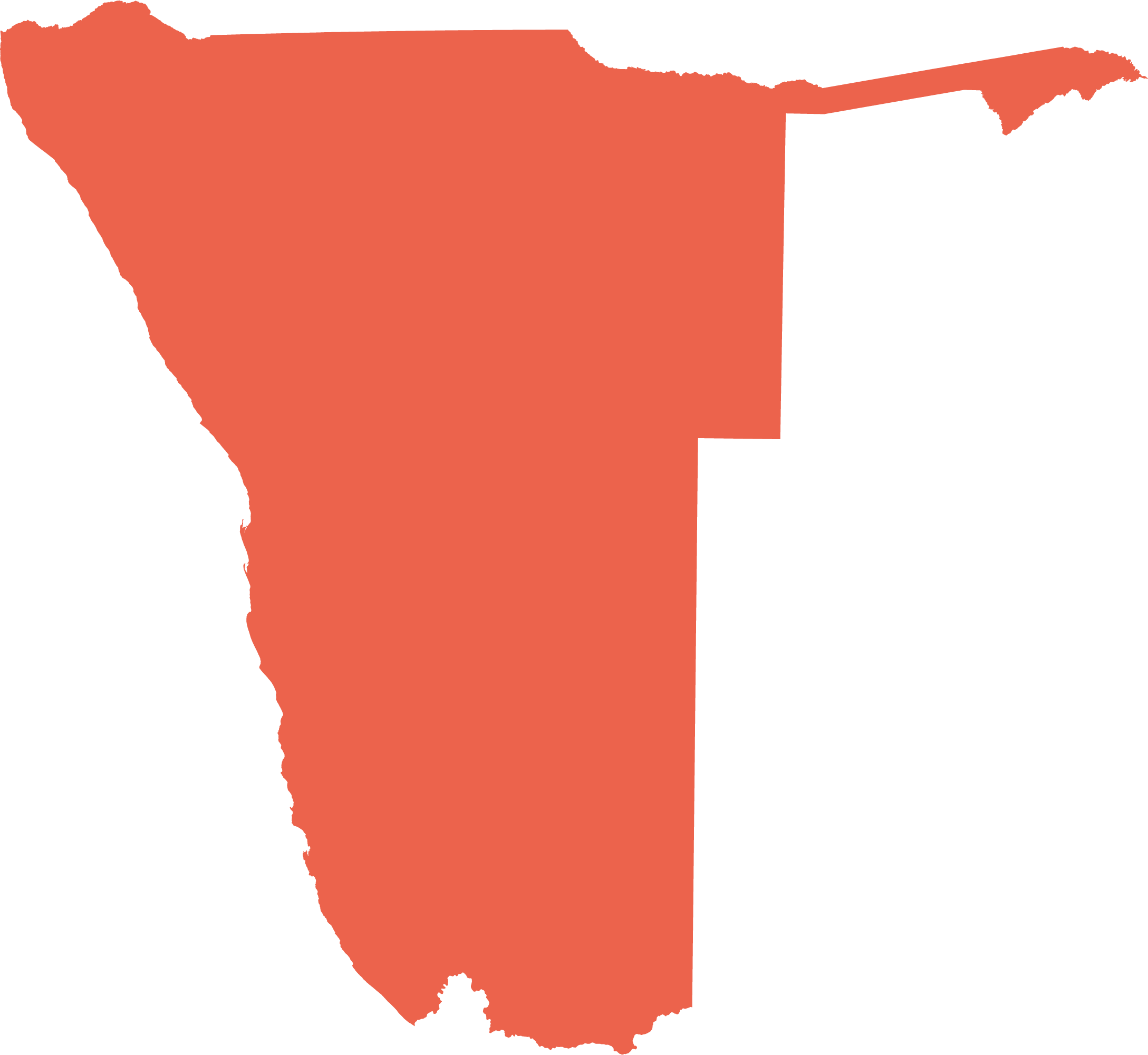Namibia's foundation & structure
The shape and composition of the land is best understood through the processes that created its landforms, prominent features and geology. Much happened during Namibia's geological history, that long period lasting thousands of millions of years. The processes included separation, collision, upheaval, outbursts and obliteration at a continental scale. They determined where Namibia now lies on Earth, and they shaped Namibia's surface, creating hard, rocky highlands in some places and lowlands and basins elsewhere. The processes were for the most part sweeping, slow and persistent, although they were sometimes punctuated by short-lived, violent events, such as the Etendeka eruptions which resulted in the largest known deposition of lava in the world.
Three major forces have defined – and continue to define – the size and shape of Namibia's features. These are geomorphological processes, such as volcanic activity and the related tectonic movements of continental plates; climatic factors, including solar radiation, wind, rain and waves that cause erosion and deposit sediments; and life processes which, given the right conditions, can build and alter the shape and composition of the land.
The combination of time and these forces has given Namibia's land its shape – from the steep drop into the extremely deep abyssal plain under the Atlantic Ocean west of the coastline to the inselbergs dotted around the country, and the extensive Kalahari Basin. This chapter explores the character and shape of Namibia's surface, its physical formation and constituent parts.
Photo: The Tsaus Mountains lie 110 kilometres southeast of Lüderitz in the Tsau ||Khaeb (Sperrgebiet) National Park. Most isolated peaks or inselbergs in Namibia have volcanic or tectonic origins, but these layered mountains have origins as marine sediments that were metamorphosed by intense pressure and heat during the formation of the supercontinent Gondwana, some 550 million years ago. Today the area around the Tsaus Mountains is wild and extremely arid, typically receiving less than 100 millimetres of rain per year.

